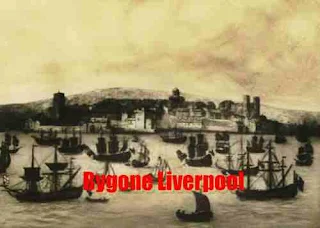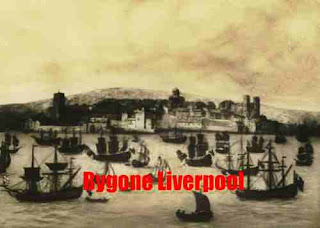Download Bygone Liverpool - (1913) - PDF book by Ramsay Muir
Bygone Liverpool
 |
| Bygone Liverpool |
From introduction:
Few cities which can boast antiquity at all comparable with that of Liverpool have so ruthlessly obliterated all the visible memorials of their past. Though it is seven hundred years since the borough was founded, it contains no building of any importance which is two hundred and fifty years old and only two (St. Peter's Church and the old Bluecoat School, both apparently doomed to destruction) which carry us back as far as two hundred years.
Scores of towns and villages of less antiquity and dignity than Liverpool can at least show a church dating back to the fourteenth century or earlier. But Liverpool has demolished its ancient churches, and rebuilt them in modern style: the church of Walton, which was mentioned in the Domesday Book, and is the mother-church of all this district, was rebuilt in instalments during the eighteenth and nineteenth centuries; the ancient Liverpool chapel of St. Nicholas, which had been the centre of the life of the borough ever since its erection in the middle of the fourteenth century, was demolished and rebuilt by our unsentimental ancestors during the same period; the still more ancient little chapel of St. Mary of the Quay vanished altogether. Some big towns, like Newcastle or Nottingham, can point with pride to a medieval fortress, preserved with care as proof of ancient dignity.
Liverpool was once in the almost unique position of possessing two medieval fortresses, a fine castle, erected early in the thirteenth century, and an embattled tower by the water's edge, fortified at the beginning of the fifteenth century. These buildings were encrusted with historical associations. They had withstood sieges, they had entertained kings and princes, among them the gallant Prince Rupert, they had given refuge to fugitives and formed prisons for captives of war. But the prosaic townsmen, despising sentimentalism, have utterly swept them away.
The Castle was demolished early in the eighteenth century, to make room for a church and a market, which has in their turn given place to a royal memorial. The Tower was allowed to survive till the nineteenth century. It served a great variety of purposes. Now it was used as a debtors' gaol, again as a place of captivity for French prisoners of war, who made and sold toys like the hero of Stevenson's St. Ives, and like him sometimes contrived brave escapes; and yet again it played the part of an Assembly Room, where ladies in hooped skirts and powdered hair danced minuets with young sparks in flowered satin. After passing through all these vicissitudes the Tower was pulled down in 1 8 19 in order that Water Street might be widened. It would no doubt have S ix cost a little more to widen the street on the other side.
Today the memory of these ancient fortresses, which might have added so much to the charm and dignity of the city, is preserved only in the names of Castle Street and Tower Buildings. This destruction of historic buildings was not the only way in which our predecessors wiped out the memory of the older Liverpool. In a degree scarcely to be paralleled, the topographical character of the city's site has been altered.
The most distinctive feature of the geography of old Liverpool was the Pool, a tidal inlet from the river, which enclosed the whole of the little walled borough down to the middle of the seventeenth century, but ran through what is now the very centre of the city; its course is marked by the line of
Paradise Street, Whitechapel and the Old Haymarket, and beneath the granite setts at the junction of Church Street and Lord Street, where today the lifted hand of the policeman regulates the busiest traffic of the city, there is said to lie buried an old bridge which once led across the Pool to the open gorsey common now covered by shops, theatres and railway-stations.
The Pool gave the city the last syllable of its name. It was the harbour where during the centuries of small things the boats of fishermen and petty traders took refuge from the swift currents of the river; it gave anchorage to ships of war during the sieges of the Civil War. If it could have been walled in and deepened, it would have added vastly to the amenities of the city. But its broad mouth was used for the construction of the first dock early in the eighteenth century, and its upper reaches dried up. So the making of docks began the alteration of Liverpool geography and has continued to affect it.
The docks, as they were built, were pushed out into the river, and thus the river-line was changed: as several of the pictures in this book show, the water used to rise to the very walls of St. Nicholas' churchyard and the Tower: and all the ground in front of this line, where the buildings by which we best know our own town have been erected, is " made " ground, won from the river during the last century and a half. So vast are the changes which have been wrought during the last two centuries in the aspect of our city that it is only with great difficulty that we can reconstruct some dim picture of the older Liverpool.
Download\ 10 MB
Some contents:
- INTRODUCTION
- KING JOHN'S LETTERS PATENT
- PLAN OF LIVERPOOL, 1668
- LIVERPOOL CASTLE
- TOWER OF LIVERPOOL
- LIVERPOOL WHEN BESIEGED BY PRINCE RUPERT
- THE SECOND TOWN HALL
- THE THIRD TOWN HALL
- THE FOURTH TOWN HALL
- MAP OF LIVERPOOL, 1725
- SOUTH-WEST PROSPECT OF LIVERPOOL, 1718
- SOUTH-WEST PROSPECT OF LIVERPOOL, 1735 (0
- CASTLE STREET
- SOUTH-EAST PROSPECT OF LIVERPOOL, 1770
- TOWN AND HARBOUR OF LIVERPOOL, 1770
- PLAN OF LIVERPOOL, 1796
- HIGH STREET, EAST SIDE
- DALE STREET
- THE LIVERPOOL UMPIRE
- WATER STREET
- THE TOWER OF LIVERPOOL
- VIEW OF LIVERPOOL, 1796
- LIVERPOOL FROM THE ROCK PERCH, 1797
- CHAPEL STREET
- ST. NICHOLAS' CHURCH AND ST. GEORGE'S BASIN
- ST. NICHOLAS' CHURCH AND BATTERY
- LIVERPOOL PRIVATEER
- LETTER OF MARQUE
- FIGHT BETWEEN "MENTOR" AND "CARNATIC"
- CUSTOM HOUSE AND CASTLE
- TOWN AND HARBOUR OF LIVERPOOL, 1817
- ST. NICHOLAS' CHURCH AND TOWER BUILDINGS
- MANN ISLAND
- JAMES STREET
- LIVERPOOL EXCHANGE
- CORN EXCHANGE
- PADDLE STEAMER " ROYAL WILLIAM "
- PADDLE STEAMER "LIVERPOOL"
- PADDLE STEAMER " PRESIDENT "
- PADDLE STEAMER "BRITANNIA"
- SCREW STEAMSHIP "GREAT BRITAIN"
- PADDLE STEAMER « SCOTIA "
- SCREW STEAMSHIP "OCEANIC"
- CASTLE DITCH, EAST SIDE
- CASTLE DITCH, WEST SIDE
- ST. GEORGE'S CRESCENT
- LORD STREET, NORTH SIDE
- LORD STREET, SOUTHSIDE
Download\ 10 MB









